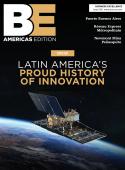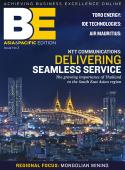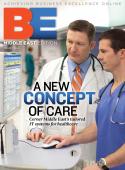The public is watchingImproving the transportation infrastructure in East Texas is a public service requiring responsibility and accountability from everyone involved. The Texas Department of Transportation (TxDOT) describes its mission as being ÔÇ£to work cooperatively to provide safe, effective and efficient movement of people and goods.ÔÇØ It aspires to the vision of being ÔÇ£a progressive state transportation agency recognized and respected by the citizens of Texas.ÔÇØ One of TxDOTÔÇÖs 25 districts that certainly lives up to that vision is the Bryan District, which plans, designs, builds, operates and maintains the state transportation system in ten counties in East Texas: Brazos, Burleson, Freestone, Grimes, Leon, Madison, Milam, Robertson, Walker and Washington.The city of Bryan is roughly equidistant from Waco to the north and Houston to the South. As the major highway linking these cities, State Highway 6 (SH 6) is a vital part of the DistrictÔÇÖs infrastructure, and several improvement projects are currently under way. One is to improve mobility and safety along SH 6 between Farm to Market (FM) 158 (Boonville Road) and Old Reliance Road, which is often congested due to traffic to and from Sam Rayburn Middle School. The proposed new James Earl Rudder High School will place additional strain on this section of the road. The SH 6 project will improve traffic flow, reduce congestion, and improve safety by signalizing the intersections at Old Reliance Road and SH 6 frontage roads, adding right turn lanes at Old Reliance Road and the northbound frontage road, and relocating ramps to improve traffic flow to high traffic areas.A little south of Bryan, a new section of SH 6 is being built. ÔÇ£That is the largest of our current roadway expansion projects,ÔÇØ says Wood, ÔÇ£on SH 6 from the Navasota River to FM 159. That project involves construction of a new four lane freeway with continuous one-way frontage roads. It has been a challenge trying to build a brand new freeway while maintaining traffic, and dealing with the ever changing weather in the Brazos Valley.ÔÇØUpgrading transportation infrastructure in line with population growth is a serious challenge in Texas, Bryan explains. ÔÇ£The current population growth of our state is near 1,200-per-day. At that rate we add a city the size of San Antonio or Austin to the map of Texas every two years. Our funding is largely tied to the use of gasoline/diesel which in an era of increasing fuel efficiency means possibly slowing or even declining funding even with a burgeoning population.ÔÇØ┬á How seriously the District takes its responsibilities is evident in the awards it continues to win. In 2007 the Bridge Section of the Bryan District received the Bridge Safety Inspection Award for having the highest average percentage of bridges in compliance for routine inspections during the previous 12-month period. ÔÇ£This was the third straight year the Bryan District was rated at 100 percent,ÔÇØ says Wood. ItÔÇÖs an award he must be personally proud of, too, as he began his career at TxDOT as an engineering assistant in the Bridge Division in 1983. During his 10-year stint there he worked on the design of literally hundreds of bridges.┬á Wood is in no doubt about what it takes to deliver the vision in this industry. ÔÇ£Transportation is a service oriented industry,ÔÇØ he says. ÔÇ£Our jobs here are to do everything we can within the constraints allowed by our legislature to keep our transportation system moving safely. It takes every person working his/her best to get that accomplished. I encourage everyone to treat others as they would want to be treated and to work every minute as if the public was watching. I assure them they are watching. We give our employees the tools and materials to accomplish their task and ask them to get it done. They are given the authority and with that authority comes responsibility. We are all fully aware of the consequences of failing to do our job. The public is depending on us.ÔÇØ┬á









